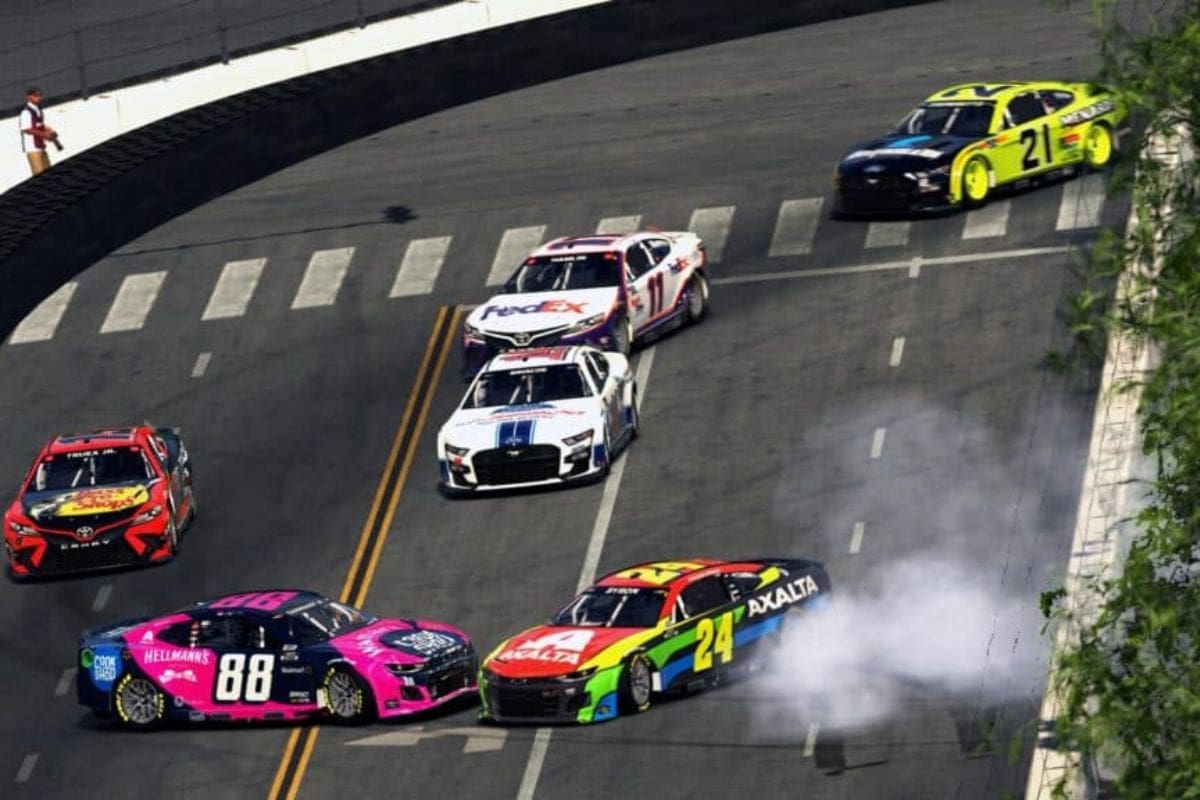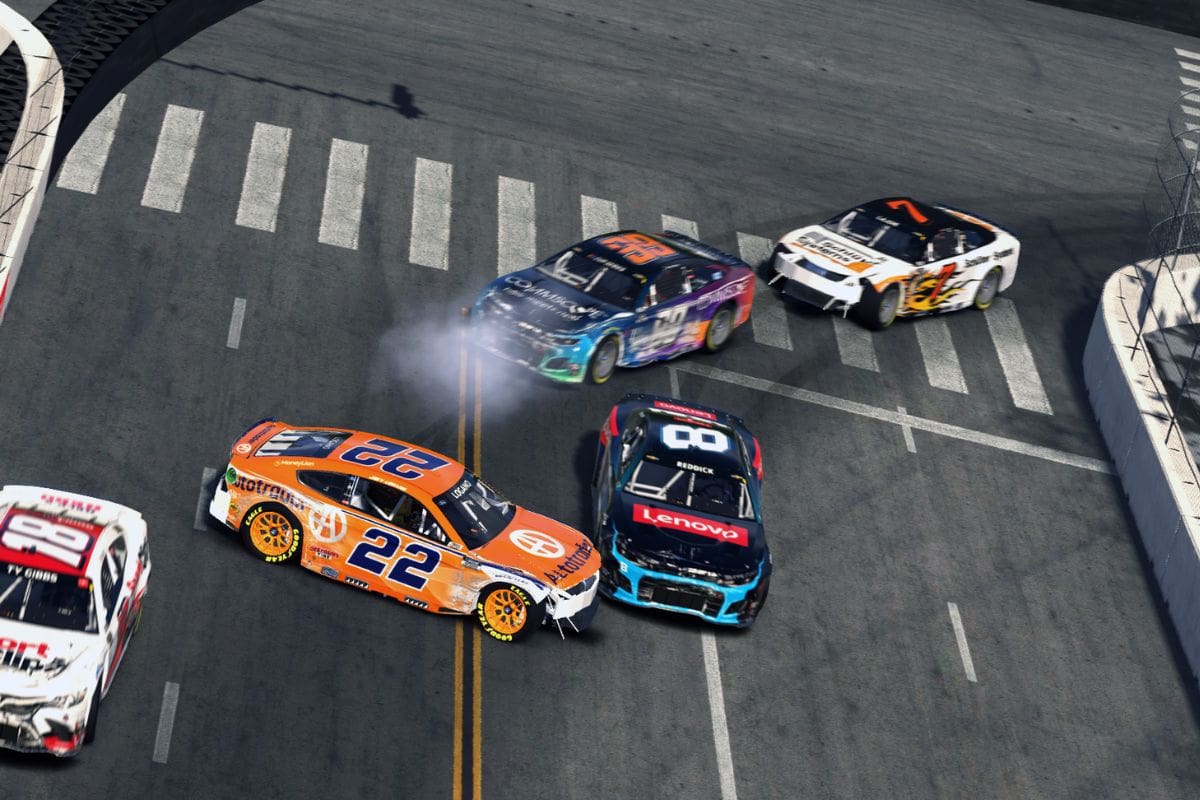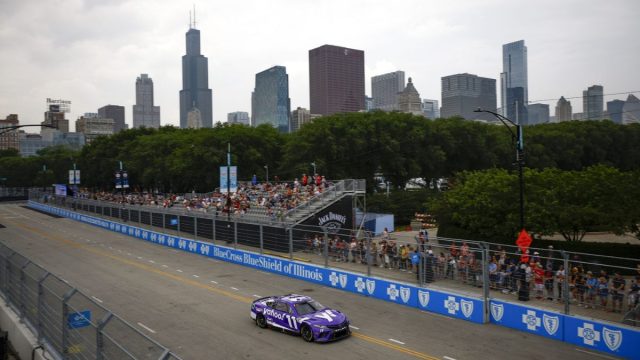NASCAR Fans in Chicago in Confusion: The debate over whether to prioritize the Grant Park 165 or the Chicagoland Speedway has ignited a passionate discourse among Chicago’s NASCAR enthusiasts, revealing a deeper tension between preserving tradition and embracing modernity. Supporters of Grant Park 165 argue for the vibrancy and unique urban experience it brings, while loyalists of the Chicagoland Speedway emphasize the irreplaceable heritage and authentic racing atmosphere it offers. This division not only raises questions about fan engagement and accessibility but also challenges stakeholders to weigh the economic implications and community impact of each venue. With emotions running high, the future of NASCAR in Chicago hangs in risky balance.
Key Highlights
- Grant Park 165 offers high excitement in an urban setting, attracting fans seeking a novel and unique racing experience.
- Chicagoland Speedway provides a traditional NASCAR experience, appealing to fans who value the sport’s historical roots and established venues.
- Residents express concerns over traffic disruptions and road closures associated with Grant Park 165.
- The economic impact of Grant Park 165 benefits local businesses and creates jobs, despite concerns over ticket prices and infrastructure strain.
- Balancing tradition and innovation is crucial for NASCAR’s future in Chicago, integrating urban and traditional race elements.
Historical Context
In Chicago’s rich motorsports history, NASCAR has been a significant part since as far back as 1954, when the inaugural sanctioned Grand National race took place at Santa Fe Speedway. This groundbreaking event marked the beginning of an enduring partnership between the Windy City and the exhilarating world of stock car racing. Santa Fe Speedway, with its dirt track, set the stage for future NASCAR events, fostering a fervent following among local fans and establishing Chicago as a notable stop in the NASCAR circuit.
As the sport evolved, Chicago’s venues adapted and transformed to keep pace with the growing demands of high-speed racing. Soldier Field, primarily known for its association with football, served as a temporary home for NASCAR, offering a unique urban backdrop that drew enthusiastic crowds. However, it was the advent of the Chicago Motor Speedway in Cicero in 1999 that signaled a significant shift. This state-of-the-art facility, although short-lived, highlighted the city’s commitment to providing modern racing infrastructure, further solidifying its status in the NASCAR community.

The turn of the millennium saw the rise of Chicagoland Speedway in Joliet, a venue that played an important role in NASCAR’s expansion efforts during the ’90s. Chicagoland Speedway quickly became a cornerstone of the NASCAR schedule, hosting major events and attracting fans from across the nation. Its introduction marked a new era, characterized by improved spectator experiences and technological advancements in racing.
Debate Over Venue
The shift from the traditional Chicagoland Speedway to the urban streets of Grant Park 165 has sparked a passionate debate among NASCAR enthusiasts, reflecting a broader clash between creativity and tradition. Supporters of the street circuit argue that it brings a new level of excitement and accessibility into the sport, potentially attracting a broader audience. Conversely, critics highlight logistical challenges, such as traffic disruptions and safety concerns, and argue that the permanence and familiarity of a traditional racetrack like Chicagoland Speedway provide a more predictable and controlled environment.
Supporters of Grant Park 165 emphasize its potential to revitalize interest in NASCAR by offering a fresh, dynamic experience that contrasts starkly with more traditional venues. They argue that the urban setting can create a festival-like atmosphere, drawing in casual fans and tourists.
However, traditionalists maintain that the established infrastructure and historical significance of venues like Chicagoland Speedway provide an irreplaceable racing experience. They suggest that alternative venues such as Road America or Kentucky Speedway could offer a compromise, balancing novelty with logistical practicality.

Community Concerns and Reactions
Amid the spirited debate over the venue choice, community concerns about the Grant Park 165 have intensified, particularly focusing on the anticipated traffic disruptions and road closures. As Chicago gears up for what promises to be a landmark event in the city’s sporting calendar, residents are vocal about the potential inconveniences.
“Never had to shut down any roads when they raced at Chicagoland.” – (fan reaction)
Here’s hoping it’s the last time.” – (fan reaction)
Social media platforms have become a battleground of opinions, with some locals expressing frustration over the expected logistical nightmares, while others welcome the buzz and prestige associated with hosting a NASCAR street circuit.
“I forgot we were doing this cr*p again.” – (fan reaction)
The nostalgia for Chicagoland Speedway is palpable among long-time fans, who reminisce about the ease of access and established infrastructure of the former venue. For these individuals, the move to Grant Park is seen as a departure from tradition and a harbinger of urban congestion. The anticipated road closures around the park are a particular sticking point, with fears that daily commutes and local businesses will be adversely affected.
“Chicagoland would’ve been better. Nothing against half ass street courses but they need to run them in cities with no racetrack within 125 miles of it. Would make sense instead of ignoring the fact chicagoland is a much better and permanent facility.” – (fan reaction)
Conversely, there is an undeniable excitement among a different segment of the community. The novelty of a street race in the heart of Chicago has captured the imagination of many, who see it as an opportunity to highlight the city on a global stage. This faction is optimistic about the event’s potential to enhance Chicago’s profile and bring a fresh, dynamic energy to the downtown area.
“Although I wasn’t the biggest fan of this race when it was announced. You can’t argue that last year’s race wasn’t great. Watching SVG show off so cool. I’m actually looking forward to this year’s race weekend.” – (fan reaction)
City and NASCAR officials are acutely aware of these concerns and are committed to mitigating disruptions. By implementing strategic planning and offering alternative entertainment options, they aim to strike a balance that satisfies both the ardent race enthusiasts and the apprehensive residents. The true test will be in how effectively these measures are executed, ensuring that the event is both a sporting success and a harmonious urban experience.
Setup for the Chicago Street Race, which is one month from tomorrow, set to begin: https://t.co/sybxamwywa
— Jeff Gluck (@jeff_gluck) June 6, 2024
Economic Impact and Community Engagement
While the Grant Park 165 has sparked considerable debate, its substantial economic impact on Chicago cannot be overlooked. Last year’s race poured an impressive $109 million into the local economy, highlighting the transformative potential of high-profile events. This influx of capital has cascading effects, from bolstering local businesses to enhancing city infrastructure. Moreover, the creation of 750 jobs highlights the event’s role in stimulating employment, providing opportunities across different sectors, including hospitality, retail, and transportation.
However, the economic benefits are compared with concerns regarding ticket prices and the strain on the city’s infrastructure. Increased ticket costs may alienate segments of the Chicago population, potentially diluting the inclusive spirit that large-scale community events aspire to foster. At the same time, the logistics of accommodating such a massive influx of visitors necessitate meticulous planning to mitigate disruptions and ensure the city’s infrastructure can cope with the increased demand.
In response to these challenges, NASCAR and city officials have launched several community engagement initiatives. Free festivals and events aim to democratize access to the festivities, allowing a broader swath of Chicagoans to partake in the excitement surrounding the race. Additionally, keeping certain portions of Grant Park accessible during the event weekend is a strategic move to balance the needs of the event with the public’s right to enjoy communal spaces.
Balancing Tradition with Innovation
Balancing the tension between preserving NASCAR’s storied legacy and embracing the dynamic potential of street racing in Chicago demands a delicate equilibrium. On one side stands the venerable Chicagoland Speedway, a stronghold of traditional racing values that has hosted countless memorable moments for fans. This oval track symbolizes consistency and the classic NASCAR experience, where the roar of engines and the thrill of high-speed laps are deeply ingrained in the sport’s identity.
Conversely, the proposed Grant Park 165 street race represents a bold venture into uncharted territory. The allure of racing through the heart of Chicago offers a fresh, urban spectacle that could captivate a new generation of fans. The accessibility and novelty of a city circuit promise to revive the sport with a cosmopolitan flair, potentially drawing in audiences who might otherwise overlook traditional venues.
The challenge lies in finding a harmonious blend that respects NASCAR’s heritage while pushing the boundaries of what the sport can be. Embracing innovation through street racing can highlight NASCAR’s adaptability and relevance in a rapidly evolving entertainment landscape. However, it is vital to ensure that such ventures do not alienate the loyal fanbase that cherishes the traditional aspects of the sport.

News in Brief: NASCAR Fans in Chicago in Confusion
The conflict between Grant Park 165 and Chicagoland Speedway highlights a significant dilemma in motorsport – balancing tradition with innovation. This debate not only showcases the divergent preferences of NASCAR fans but also represents broader concerns regarding accessibility, economic impact, and community engagement.
As Chicago navigates this complex landscape, the city must strategically integrate historical legacy with contemporary appeal to sustain and enrich the region’s motorsports culture for future generations.
ALSO READ: NASCAR Plans to Complete their Unfinished Business at Chicago
